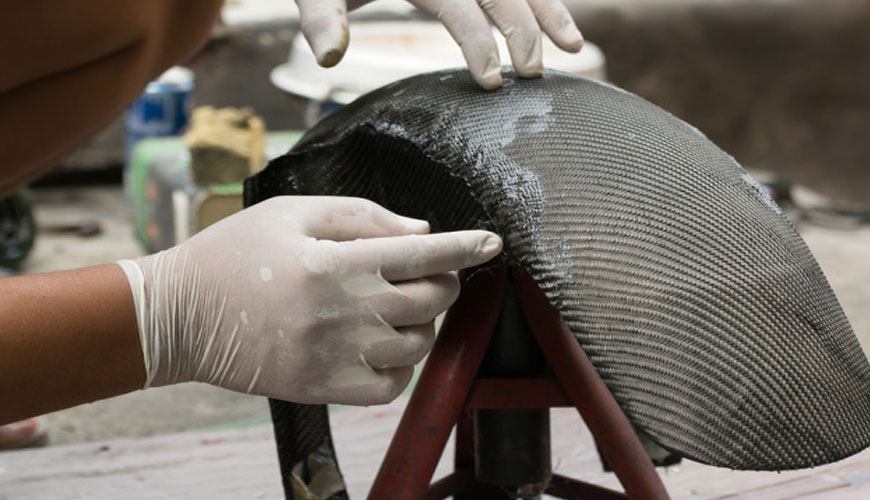

EUROLAB, with its state-of-the-art accredited laboratories and expert team, provides precise and fast testing services within the scope of ISO 1268-3 testing. This part of ISO 1268 specifies the method of making test plates by wet compression molding. Using this method, test plates can be made reproducible, allowing the results of tests performed at different times or at different locations to be compared.

Test specimens cut from plates made by wet compression molding are useful in characterizing the reinforcement used. The reinforcement can be mats or fabrics.
The following properties of these materials are of particular interest:
To make plates by wet compression molding, a press with two flat die plates is used. The bottom plate is fixed and can be pressed on the top plate. Reinforcement materials such as wicker or fabric are placed on the bottom plate and a sufficient amount of suitable resin system is poured on the reinforcement.
The top plate is then pressed against the bottom plate. As a result, the resin system flows through the reinforcement. The distance between the plates can be adjusted by means of the gaps, so that the relative amount of reinforcement and the resin system can be changed. The plates may be at ambient temperature or higher; this temperature determines the curing time of the resin system.
The reinforcements will be in the form of flat sheets that can be cut to the required size. In wet compression molding, textile glass is often used as reinforcement. It is very important that the layers are strong enough to withstand the resin flow during compaction. This means that the supplement should be relatively insoluble in the resin system.
The preferred reinforcement content depends on the type of reinforcement (mat or fabric). Also, the value of the reinforcement content, expressed as a percentage of the total mass, will additionally depend on the amount of filler in the resin (more filler will increase the density of the resin).
A pair of die plates will be used, forming two parallel planes. Since this process does not require very high pressure, a relatively lightweight mold can be used. In general, pressures in the range are sufficient. Spacers must be provided to the mold to produce test plates of a given thickness. The stiffness of the two mold plates must be high enough to ensure that the faces of the test plates do not deviate from parallel by more than ± 0,3 mm.
EUROLAB assists manufacturers with ISO 1268-3 test compliance. Our test experts, with their professional working mission and principles, provide you, our manufacturers and suppliers, the best service and controlled testing process in our laboratories. Thanks to these services, businesses receive more effective, high-performance and quality testing services and provide safe, fast and uninterrupted service to their customers.
To get an appointment, to get more detailed information or to request an evaluation, you can ask us to fill in our form and reach you.